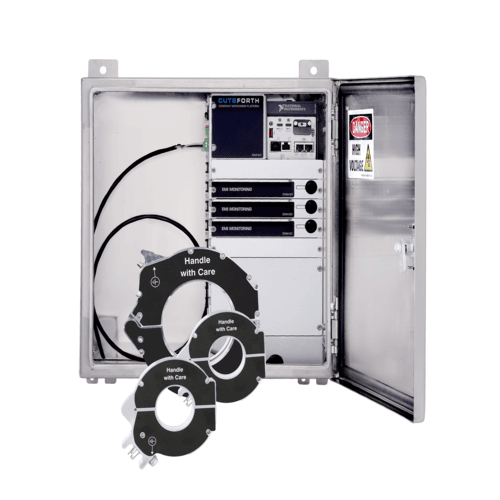Electro- magnetic Interference (EMI) Monitoring
EMI Monitoring is a non-invasive, continuous monitoring system designed to detect abnormal electromagnetic emissions from high-voltage electrical equipment, particularly generators and transformers. By analyzing patterns in RF (radio frequency) bands, the system identifies early warning signs of electrical failure such as arcing, sparking, corona, and partial discharges—often well before traditional inspection methods would catch them.
Electromagnetic Interference (EMI) Monitoring System
EMI Monitoring is a non-invasive, continuous monitoring system designed to detect abnormal electromagnetic emissions from high-voltage electrical equipment, particularly generators and transformers. By analyzing patterns in RF (radio frequency) bands, the system identifies early warning signs of electrical failure such as arcing, sparking, corona, and partial discharges—often well before traditional inspection methods would catch them. With support for multiple RF frequency bands, user-configurable thresholds, and real-time data integration via InsightCM™, it provides a predictive, plant-wide view of asset health without requiring an outage or intrusive installation.
Key Features Of The Electro- magnetic Interference (EMI) Monitoring
-
Continuous monitoring of energized equipment
-
Five RF bands for generator monitoring; one total power band for transformers
-
User-defined alarm thresholds in microvolts (µV)
-
Early detection of arcing, corona, sparking, gap and partial discharges
-
Fully non-invasive—no insertion of probes or physical modification required
-
Supports coaxial runs up to 200 ft
-
Easy installation—clamps around Generator-to-Neutral Ground or frame ground
-
Includes all components plus InsightCM™ software license
-
Backed by expert support from our engineers
Technical Specifications Of The Electro- magnetic Interference (EMI) Monitoring
RF Bands for Generators:
-
Band 1: Exciter and Collector (30 kHz–500 kHz)
-
Band 2: Stator Core and Slots (500 kHz–5 MHz)
-
Band 3: End Windings (5 MHz–30 MHz)
-
Band 4: IsoPhase Bus or other connections (30 MHz–100 MHz)
-
Band 5: Total Power Band (generator vs. system noise)
For Transformers:
-
Single Total Power Band compared against generator noise
Threshold Levels (User-Defined):
-
Below 1,000 µV – Normal (no issues)
-
1,000–10,000 µV – Warning (developing condition)
-
Above 10,000 µV – Alarm (remedial action required)
Installation Of The Electro- magnetic Interference (EMI) Monitoring
Installation is quick and non-invasive. RF current transformers (RFCTs) are typically clamped around the Generator-to-Neutral Ground connection or frame ground. No probes are inserted into equipment, and no outages are required during setup.
Applications Of The Electro- magnetic Interference (EMI) Monitoring
-
Generators (Stator, End Windings, IsoPhase Bus)
-
Power Transformers
-
High-voltage electrical infrastructure
-
Plants requiring early detection of insulation or electrical breakdown
Failure Modes Detected
-
Arcing
-
Corona Discharge
-
Gap Discharge
-
Partial Discharge
-
Sparking
Benefits Of The Electro- magnetic Interference (EMI) Monitoring
-
Predicts and prevents failures before they cause damage
-
Reduces unplanned downtime and maintenance costs
-
Replaces invasive, multi-system diagnostics with one holistic solution
-
Enables full visibility of generator and auxiliary equipment health
-
No plant outage or asset modification required for installation
-
Lower total cost of ownership compared to traditional methods
Included in the System
-
Multiple RFCT sensors
-
All required mounting and connection hardware
-
Coaxial cable support up to 200 feet
-
One InsightCM™ license for system data collection, visualization, and trending
-
Technical support from our subject matter experts

